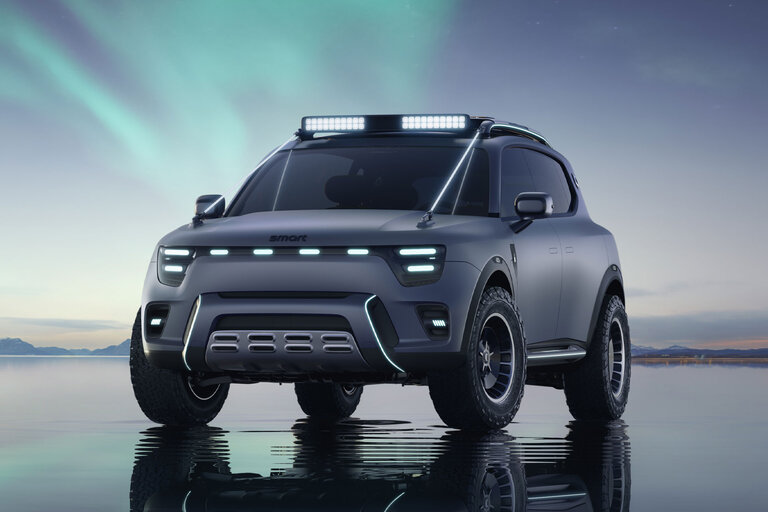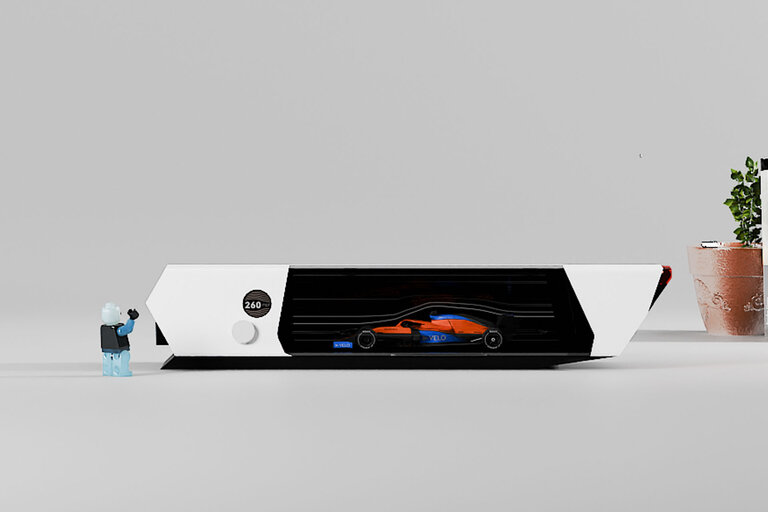Buying a new car or truck can be nerve-racking, what with all the different options to choose from and the financial aspect of such a major transaction. But finding out a car’s safety ratings—and how it earned those ratings—should be simple and stress-free. We can help. Safety organizations have different methods of testing vehicles before assigning their ratings. The two main players are the National Highway Traffic Safety Administration (NHTSA) and the Insurance Institute for Highway Safety (IIHS).
NHTSA’s Stars on Cars
NHTSA started wrecking cars in 1978 to test their performance during frontal-impact crashes and later added side and rollover crash tests as well as lists of recommended safety technology to its New Car Assessment Program (NCAP). Ratings are given for each test as well as overall, with five stars being the top score. The federal agency now conducts 90 to 125 tests annually on high-volume models that are new or significantly updated for a given model year. That means a car such as the redesigned Kia K5 would be tested but not a limited-edition sports car or a carryover volume model.
NHTSA’s tests are performed by several independent facilities located around the United States. One of these is Calspan Corporation, an engineering and research firm based in Buffalo, New York. “We have no ties to anyone,” said Gerald Goupil, Calspan’s director of vehicle crash testing. “In the scheme of running a test, we provide a completely unbiased result.” Goupil says car-focused clients include government agencies (like NHTSA, which is part of the Department of Transportation) or car companies that don’t have the capacity or infrastructure needed to run certain tests. Calspan’s 58,000-square-foot test lab features two crash halls and is used to test everything from production cars and prototypes to motorcycles and heavy-duty trucks.
IIHS Picks Its Safest Cars
An insurance-industry-backed nonprofit organization, the IIHS conducts its own series of six crash tests on over 100 new vehicles each year. Like NHTSA, it generally chooses vehicles that sell in high numbers and are new or significantly updated. Ratings are Good, Acceptable, Marginal, or Poor. Other factors—such as the effectiveness of a vehicle’s headlights, the ease of using child-seat anchors (LATCH), and the performance of safety systems such as automated emergency braking—are factored into a vehicle’s overall score.The IIHS’s highest rating is Top Safety Pick+. To earn it, a car must score Good ratings in driver’s-side small-overlap front, moderate-overlap front, side, roof-strength, and head-restraint crash tests. It must also earn a Good rating for headlights and either Good or Acceptable in the passenger-side small-overlap test. The car also must score a rating of Advanced or Superior in driving tests related to the effectiveness of front crash-prevention systems such as automated emergency braking. The next-best rating of Top Safety Pick goes to vehicles that earn those same top ratings in the five crash tests and front crash-prevention equipment performance but can score only Acceptable in headlights; Top Safety Pick award does not require a Good or Acceptable rating in the passenger-side small-overlap front test.“We develop tests not to necessarily supplant what NHTSA is producing, but to augment it,” said Joe Nolan, chief administrative officer and senior vice president for vehicle research at the IIHS test facility in Ruckersville, Virginia. “We tell consumers: What you really should be looking for is no less than four stars from the government and a Good or Top Safety Pick recommendation from us.”
Frontal Crash Test
To simulate a head-on collision between two vehicles of a similar weight, a vehicle is crashed into a fixed barrier at 35 mph. Two crash-test dummies are placed in the car: an average-size (50th percentile) adult male in the driver’s seat and a small-size (5th percentile) female in the front passenger seat. The test dummies wear seatbelts in every test.
Side Pole Crash Test
A 3015-pound barrier crashes into the side of a static vehicle at 38.5 mph. This test is done to simulate the results from a side-impact collision, such as when one car is hit by another vehicle that failed to yield or stop at a four-way intersection. Two crash test dummies are placed in the car, an average-size adult male in the driver’s seat and a small-size female in the rear seat directly behind the driver.
Side Barrier Crash Test
A vehicle is pulled at 20 mph and at a 75-degree angle into a 9.5-inch-diameter pole, hitting the car on the side at the driver’s-seat position. This test is done to simulate what happens if a driver slides off a road and crashes into an object such as a utility pole. A small-size female dummy is placed in the driver’s seat.
Rollover Resistance Test
A vehicle’s susceptibility to rolling over during a highway-speed driving maneuver is measured in a lab using a measurement called the Static Stability Factor. This determines a vehicle’s center of gravity and whether a car or truck has a greater chance of rolling over after a driver loses control and the vehicle leaves the road. This test does not physically crash a vehicle or use a test dummy.NHTSA assigns individual star ratings based on how vehicles weather each test and issues an overall safety score. The more stars you see the better.
IIHS Moderate-Overlap Front
A car is driven into a two-foot-tall deformable barrier at 40 mph, striking it with 40 percent of its front width, on the driver’s side of the vehicle. The test simulates a head-on collision between two vehicles of the same weight. An average-size male test dummy is in the driver’s seat.
IIHS Driver’s-Side Small-Overlap Front
To simulate a head-on collision between two vehicles of a similar weight, a vehicle is crashed into a fixed barrier at 35 mph. Two crash-test dummies are placed in the car: an average-size (50th percentile) adult male in the driver’s seat and a small-size (5th percentile) female in the front passenger seat. The test dummies wear seatbelts in every test.
IIHS Passenger-Side Small-Overlap Front
This is virtually the same test as the driver’s-side small-overlap front, except two average-size male test dummies are used, with one in the front passenger seat and one in the driver’s seat.
IIHS Side Impact
A 3300-pound “SUV-like” test barrier hits the driver’s side of a vehicle at 31 mph. Two test dummies are used, sized as a 5th-percentile adult woman or average 12-year-old child, one in the driver’s seat and the other in the rear seat behind the driver. IIHS said that size dummy is used for side testing because shorter people are more vulnerable in real-world side-impact crashes.
IIHS Roof Strength
In this test, a metal plate is pneumatically forced downward onto the roof of a car. The roof is crushed exactly five inches, and the force, which IIHS calls the strength-to-weight ratio, needed to do this is calculated. The more force needed to crush the roof five inches, the greater the likelihood that the car would perform well in a rollover.
IIHS Head Restraints
This test simulates a rear-end collision, one in which a static vehicle would be hit from behind at 20 mph. The force exerted on a driver’s neck and spine is logged by using one of the smartest safety dummies, with 24 articulated sections, meant to mimic the movement of a human spine during a collision.
Automakers Crash, Too
In addition to the insurance industry and the feds, automakers perform their own crash tests. Volvo, for instance, conducts 20,000 to 30,000 computer crash-test simulations and about 60 physical crash tests each year at its Volvo Cars Safety Centre in Gothenburg, Sweden. The Volvo Cars Safety Centre has two test tracks, one fixed and one movable, on which it conducts vehicle-impact tests at speeds of up to 75 mph. Cars can also be smashed into each other for vehicle-to-vehicle crash-test results. The movable test track can be rotated up to 90 degrees to conduct front, rear, and side impacts from multiple angles and over a wide range of speed. “There are no two crashes that are identical in the real world,” said Malin Ekholm, director of the center.
This content is created and maintained by a third party, and imported onto this page to help users provide their email addresses. You may be able to find more information about this and similar content at piano.io






